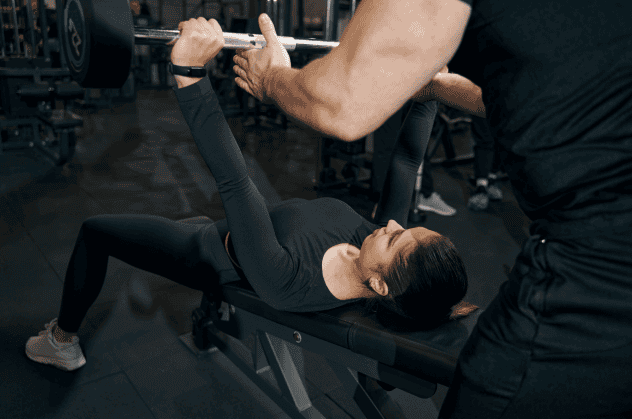Working out at home can become monotonous, and changing your environment by going to the gym can be exciting. However, if you’ve never been to a gym before, it can feel intimidating – unfamiliar machines, new faces, and a whole new routine. This beginner’s guide to starting at the gym will help you navigate it with confidence and start building both physical and mental strength.
1. Set Clear, SMART Goals:
Making lifestyle changes can be tough, but setting SMART goals (Specific, Measurable, Achievable, Relevant, and Time-bound) helps keep you on track. SMART goals provide clarity and structure, showing you exactly how well you’re progressing. For example: “I want to lose 5 pounds in 2 months through a combination of diet and exercise.”
2. Choose the Right Gym:
Not all gyms are the same, so it’s important to choose one that suits your needs. Take a tour to explore the facilities, check the cleanliness, variety of equipment, hours of operation, and location. Ask about gym etiquette and how to use basic machines. Gyms often offer trial memberships, so take advantage of those to find a place that supports your specific goals, whether it’s strength training, cardio, or group fitness classes.
3. Learn the Basics of Gym Equipment:
During your gym tour, ask for an introduction to basic equipment. Start with cardio machines like the treadmill, elliptical, rowing machine, exercise bike, and stair climber. For resistance training, familiarize yourself with machines such as the chest press, bicep curl, leg press, and tricep press. Using the equipment correctly is crucial for avoiding injury and having a positive first experience.
4. Start with a Simple Routine:
Ease into your workouts with a full-body routine that targets all major muscle groups. Focus on mastering proper form and consistency before progressing to more advanced exercises. Here’s a sample beginner routine:
– Frequency: Train on Monday, Wednesday, and Friday, with rest days on Saturday and Sunday.
– Warm-up: 5-10 minutes on a treadmill or bike.
– Bodyweight exercises: Squats, push-ups, and planks (2 sets of 10 repetitions).
– Weight machines: Lat pull-down, leg press, and chest press (2 sets of 10 repetitions).
– Cool-down: Stretching for flexibility.
5. Get Your Energy:
Proper nutrition is key to getting the most out of your workouts. About two hours before exercising, eat a snack with healthy, easily digestible carbohydrates and make sure you’re hydrated. After your workout, replenish with a combination of protein and complex carbs, along with plenty of water to rehydrate.
6. Track Your Progress:
Tracking your progress is a great way to stay motivated. Whether through a fitness app or a simple journal, record your workouts, achievements, and improvements. Even small gains can inspire you to keep going.
7. Listen to Your Body:
One common misconception is that a workout has to hurt to be effective. In reality, rest and recovery are essential for avoiding injury and ensuring long-term success. Schedule rest days (like Saturday and Sunday) into your routine, and make sure to get adequate sleep to help your body recover and grow stronger.
Conclusion:
Starting at the gym doesn’t have to be overwhelming. By setting SMART goals, learning the basics, and listening to your body, you’ll build both your confidence and your strength. Follow this beginner’s guide to starting at the gym, and you’ll be on your way to success at the gym in no time.

